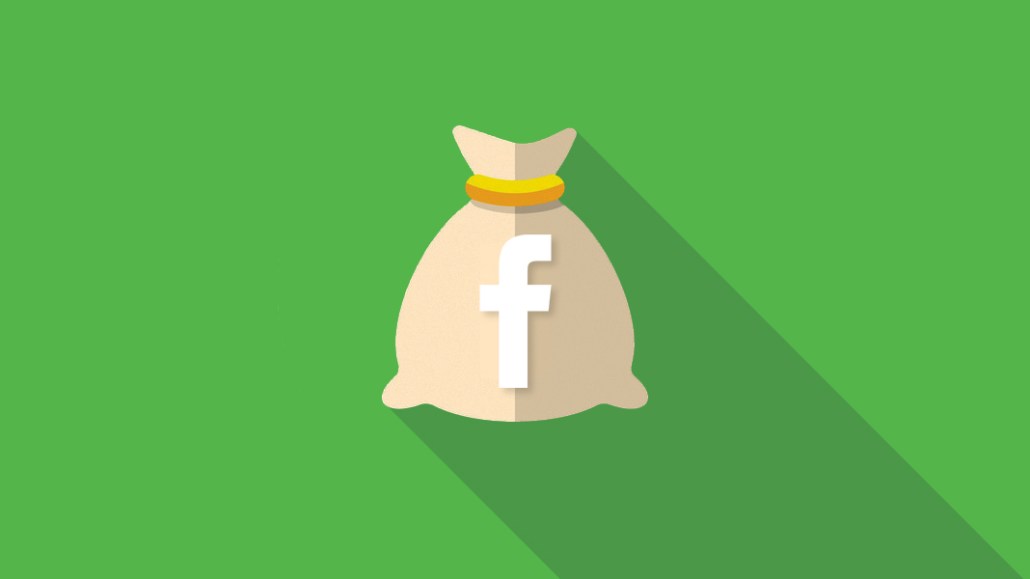‘There’s nothing to be ashamed about’: How publishers approach buying traffic through Facebook

Buying traffic is one of those things that many publishers do but few admit publicly.
To bring clarity to this phenomenon, Digiday spoke to six publisher sources who said they buy traffic on Facebook. They do this, they say, to fill insertion orders they failed to reach on their own, promote new products and to make money through the murky world of arbitrage.
The rates that publishers pay to acquire traffic from Facebook widely vary. A news publisher said it usually paid under 1 cent per click. Another publisher said it pays between 2 cents and 5 cents per click, which means that its CPMs must be at least $20 to make its money back. Yet other publishers that pay for traffic on Facebook solely for the purpose of filling oversold inventory said they usually pay more than 5 cents per click.
“You need to be really good with your ad tech and attribution to be able to understand hour by hour how you’re getting charged; otherwise, you will lose a ton of money,” said an exec from a lifestyle publisher.
Rates vary so much because many variables determine what Facebook will charge publishers for paid traffic, and Facebook adjusts its rates in real time with its own formula. Facebook penalizes content that isn’t engaging by charging the publisher of that content more for its ads. To bring the costs down, publishers have to master targeting so they’re going after the audience that is most likely to engage with the ads. Facebook declined to comment for this story.
If the publisher’s website loads slowly, is full of ads or keeps users on-page for very little time, the ad rates will increase, said an exec from an entertainment publisher. If the publisher’s ad on Facebook prompts few shares, likes and comments, or has a low click-through rate, that also causes the CPC to rise. Ad rates are also cheaper if the landing page is for a Facebook Instant Article rather than an article on the publisher’s own website.
“But Instant Articles earn less, so it negates any wins on the cost,” the exec said.
Clark Benson, CEO of Ranker, said one way Ranker uses paid traffic is to boost its posts that are already performing well organically. He added that it’s possible to make money on paid Facebook traffic through arbitrage since publishers can A/B test their ad units until their landing pages bring them more revenue than what they paid Facebook for the ads.
However, Facebook can change its algorithms and formulas whenever it wants, so publishers that rely on arbitrage place themselves at the whim of the platform. Publishers that bought traffic for more than 5 cents per click viewed it as a loss leader that is necessary for them to fulfill big campaigns so that they don’t lose future business with the advertiser.
“The salesperson who has sold a big campaign realizes that they don’t have enough inventory to complete a campaign,” said an exec from a fashion publisher. “The editor gets a call and does what they can in terms of sending out a news email, writing a couple of extra stories, posting something to Facebook. And then the digital marketing person steps in and buys traffic.”
Four of the six publishers that spoke to Digiday for this story declined to share how much of their traffic they buy. A news publisher said it buys about 10 percent of its traffic. Benson said that over the past three months, Ranker got 23 percent of its monthly visitors from paid social, with almost all of it coming from Facebook.
Kunal Gupta, CEO of Polar, which helps publishers scale native ads, estimated at least 90 percent of publishers use paid promotion for their editorial content. Although it’s common for pubs to buy audience, publisher sources were hesitant to discuss the topic because they were afraid it would associate their brands with the shady traffic buyers who try to trip verification filters.
“This is the steroid people use to hit their traffic numbers,” said Todd Sawicki, CEO of native ad platform Zemanta. “No one wants to admit they aren’t as big and strong as they otherwise might look. But there is nothing wrong with it if they are buying engaged human traffic. If you do it the right way, there’s nothing to be ashamed about.”
Max Willens contributed reporting
More in Media

Podcast companies turn to live events to capture growing advertiser spend
The surge in the number of live podcast events in 2025 reflects a broader shift: advertisers are betting bigger on podcasts — not just as an audio channel but as a full-fledged creator economy play.

Media Briefing: ‘Cloudflare is locking the door’: Publishers celebrate victory against AI bot crawlers
After years of miserably watching their content get ransacked for free by millions of unidentified AI bot crawlers, publishers were finally thrown a viable lifeline.

How Vogue could navigate potential industry headwinds as Anna Wintour — who agency execs say made ad dollars flow — brings on new edit lead
Anna Wintour’s successor at Vogue will have to overcome the myriad of challenges facing fashion media and the digital publishing ecosystem.








